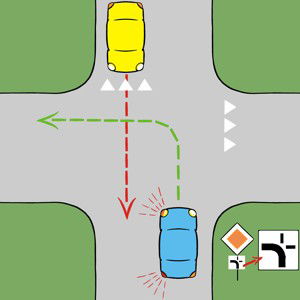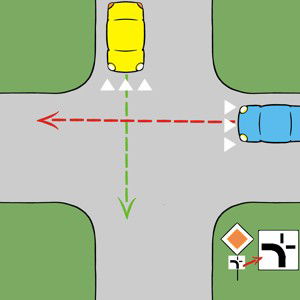Bending priority road




Below these signs are then the bottom plates that show you which way the priority road turns. The priority road can turn left or right. The thick line on the bottom plate indicates the priority road, the thin line indicate the side streets.

If you continue to follow or want to leave the bending priority road, you get the right of way from all drivers approaching the bending priority road. If you continue to follow the bending priority road, turn on your indicator anyway. Other traffic will then see where you are going. When leaving the bending priority road, you also turn on your indicator.

In this situation, the blue car may go first. The blue car drives on the bending priority road and continues to follow it. The yellow car approaches the bending priority road and must give way to traffic on the bending priority road.

Both cars are approaching the bending priority road. Since they are both approaching a priority road, it is like an priority uncontrolled junction between the two drivers. Since the yellow car is coming from the right, the blue car has to give way to the yellow car.

The cyclist is driving on the bending priority road. The blue car and the pedestrian have to let the cyclist pass.
